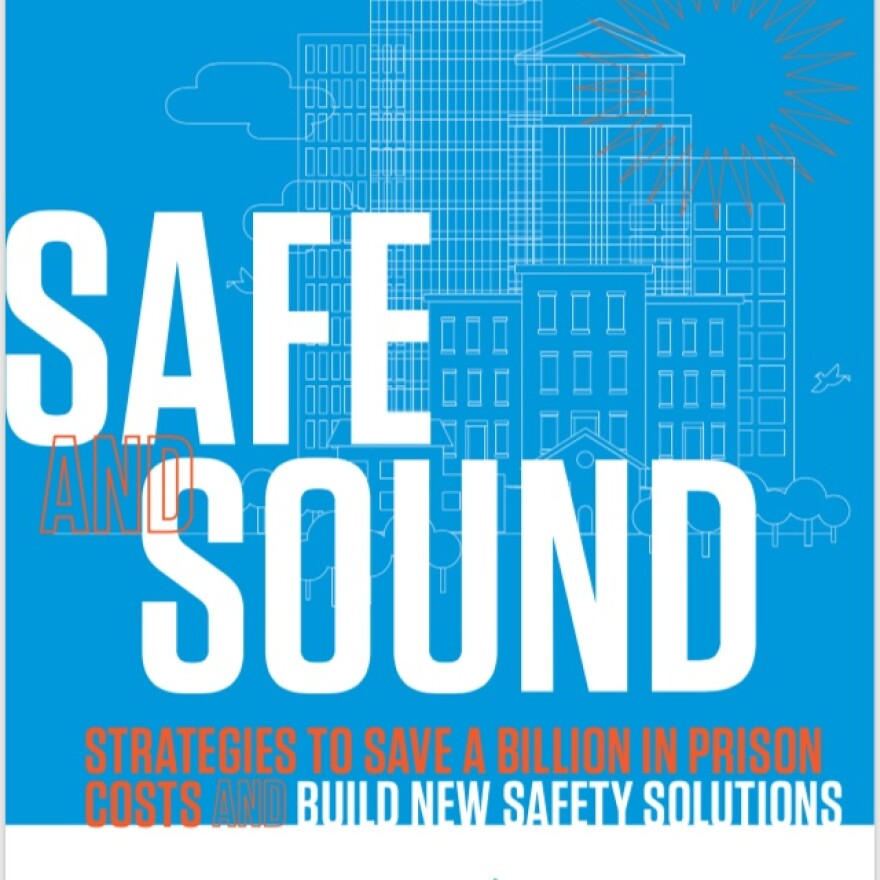With our free press under threat and federal funding for public media gone, your support matters more than ever. Help keep the LAist newsroom strong, become a monthly member or increase your support today.
30,000 California prison inmates could be safely released, says report

At least 30,000 prison inmates could be safely released if California adopts a series of reforms, according to a new report issued Thursday by the advocacy group that spearheaded the passage of voter-approved Propositions 47 and 57.
"California has emerged from a long history of being a laggard on criminal justice reform to becoming a national standout," says the report by Californians for Safety and Justice. But it argues that despite significant success in reducing prison overcrowding, the state continues to over-incarcerate, especially African-American men, and stands at a "decision moment" in criminal justice reform.
"California doesn’t need to spend $11 billion per year on prisons," said Lenore Anderson, the group's executive director. "In fact, stopping the cycle of crime depends on us making that budget smaller."
Props. 47 and 57 – along with a landmark 2010 U.S. Supreme Court ruling requiring the state to reduce overcrowding – have led to a dramatic 25 percent drop in the number of inmates over the past decade. About 115,000 men and women are now locked up in 33 prisons around California.
The report, titled "Safe and Sound," maintains that reducing the prison population by 30,000 would allow the state to close five prisons and free up $1.5 billion to spend on drug rehabilitation, mental health, job training and other programs that would help steer men and woman away from a life of crime.
It makes three key recommendations:
- End lengthy mandatory minimum prison sentences, which would give judges more discretion in deciding penalties. That would allow them to take into account someone’s chances at rehabilitation, say activists.
- Parole more low-risk inmates. Right now, the state parole board recommends release for about 20 percent of inmates who appear before it. That’s an improvement, but still not enough, the report says. Citing state statistics, it says 48 percent of California prisoners are assessed at low risk of committing another crime if released.
- Let more inmates earn their way out of prison with good credits.
"The goal has to be rehabilitation," said Anderson. "Redemption has to be real."
Many law enforcement leaders remain skeptical of the reforms that have passed, saying too many people have been released and that relaxed penalties have given criminals the green light.
"It doesn't apply across the board," said Ron Hernandez, president of the union that represents rank and file Los Angeles County Sheriff’s deputies. "But when you lessen the punishment so to speak, it emboldens them to go out there and commit more crime because there is no fear of repercussion."
Los Angeles County Sheriff Jim McDonnell and other law enforcement leaders have argued recent upticks in the crime rate are the result of some of the reforms – though they have yet to produce data to back up that claim. And crime rates remain at historic lows.
At the same time, McDonnell has said more money needs to go to rehabilitation. Activists agree; they say the way to free up that money is to incarcerate fewer people.
The report says "mass incarceration" in California continues to hit African American men the hardest.
Incarceration rates – including people locked up inside local jails and those on parole or probation – have fallen from a peak of 469 people per 100,000 in 2007 to 330 today. But for African-American men it’s 4,367 per 100,000. For Latino men, its 990.
Prop. 47, approved in 2014, reclassified some felonies as misdemeanors. Proposition 57, approved in 2016, made it easier to parole felons convicted of non-violent crimes. They have led to significant changes in the state’s criminal justice system:
- 1.5 million people – most of them black and Latino men – are now eligible to remove non-violent felonies from their conviction records. That increases their chances of getting a job.
- The state allocated $103 million this year to help formerly incarcerated people through community-based programs.
- District Attorneys have filed 22 percent fewer felony cases.
In an interview with KPCC, California Attorney General Xavier Becerra said he supports a further reduction in the state prison population.
The way to overcome opposition is to show that releasing certain non-violent prisoners helps reduce crime, he said.
"I think you prove success at reintegrating some of these young men who have been incarcerated – and most of them are young men – by dedicating some resources," Becerra said. "How about we give them eight years to get one year of UCLA under his belt, because that's essentially what it takes to lock up a young man in a juvenile facility for one year."
Becerra, law enforcement leaders and reformers alike are watching closely how California counties spend the $103 million allocated for rehabilitation – and how well it works getting people out of a life of crime. More importantly, reformers are looking at how the money might alleviate the factors that often lead people to criminal activity – including mental illness, drug addiction and poverty.
But Anderson says the money is not enough.
"There is simply no way to achieve a safe and sound California without a drastic change in how we spend taxpayer money," she said.








